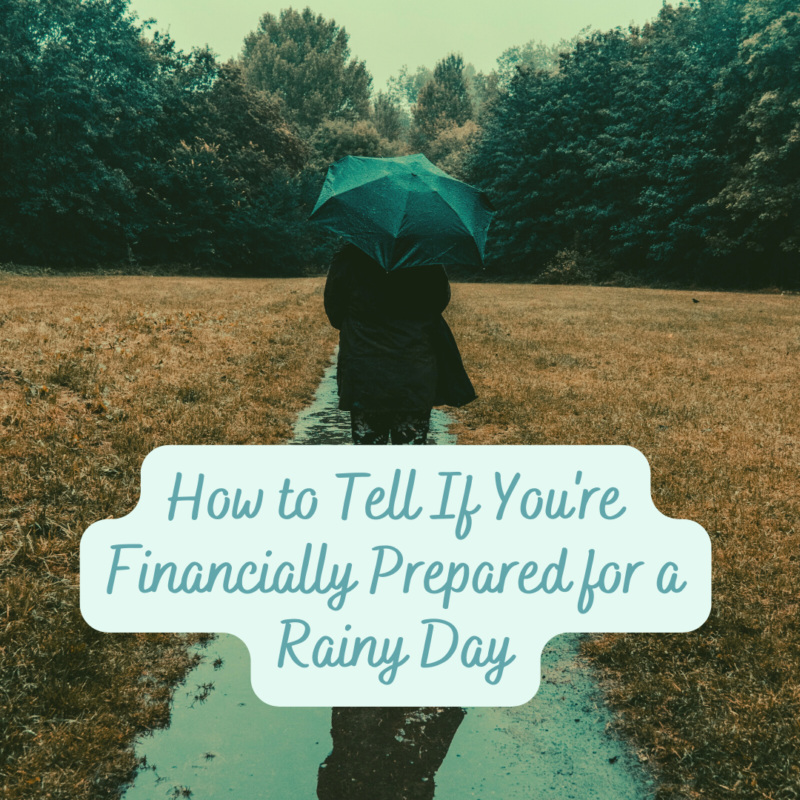
Do you keep track of your finances so you know how much money you can reasonably spend each week? You’re on your way to a healthy budget! You understand the importance of realistic spending. But are you saving for a rainy day? If something unexpected occurs, such as issues with your car or a leak in your home, could you afford the repairs? What if you are injured and can’t work for a few weeks? To prepared for these types of events, you can create a rainy day fund.
If you don’t have extra money set aside, you aren’t preparing financially for a “rainy day.” Preparing for a rainy day doesn’t have to be complicated, and anyone can do it!
Here is everything you need to know about a Rainy Day Fund, including what it is, why it’s necessary, and how you can create one.
What is a Rainy Day or Emergency Fund?
Rainy day funds and emergency funds are financial safety nets. If you ever have an unplanned financial need, you can use the money you’ve set aside.
However, just to clarify, a new pair of shoes or video game doesn’t count as an “unplanned financial need.” We’re talking about things you need to spend money on, like a car to go to work or a refrigerator to keep your food cold.
To help with your financial planning, we’ve included descriptions of both a Rainy Day Fund and an Emergency Fund. You can use these guides to decide how you want to save.
Rainy Day Fund: A Rainy Day Fund is about $1000-$1500. It’s enough money to help cover an unplanned financial need, such as a car repair, new appliance, medical expense, or minor home repair.
Emergency Fund: An Emergency Fund is a much larger financial safety net, anywhere from three to six months of your living expenses. This fund can help cover job loss or being out of work temporarily due to a major accident or injury.
Why is a Rainy Day Fund an Important Part of your Budget?
Here are some other reasons to have a rainy day or emergency fund.
Reduces Stress of an Unexpected Cost
It feels stressful when an appliance breaks or you have an injury. You need to find a replacement appliance or schedule necessary medical care. These steps already take time and money. It will add to your stress if the money you need isn’t available.
With a rainy day fund, you won’t have to worry about whether you have the money or where to get it if you don’t. This financial security helps you feel less overwhelmed.
Prevents Using Higher Interest Loan Sources for Funds
Without a rainy day fund, you might have to use a credit card or take out a loan to pay for unexpected financial needs. These sources charge high-interest rates that can be more of a financial burden.
If you already have the money set aside for a rainy day, you won’t have to use any loan sources.
Finding the Funds Won’t Interfere with Other Financial Goals
Part of your current budget might include saving for a vacation, home renovation, or luxury item. You might also have a 401k. If you have an emergency financial need but no rainy day fund, you might need to use the money you’ve saved for retirement or a European cruise for an unexpected expense.
A rainy day fund helps ensure you’ll have the money you need without taking away savings from other future goals.
Tips for Creating a Rainy Day Fund
Are you ready to create a rainy day fund? It won’t happen overnight, but it isn’t difficult, either. Here are some tips to start saving money for a financial emergency.
Live Frugally for a Month or Two
You can live frugally for a few months to quickly save enough money for your rainy day fund. This strategy means looking at your typical spending to see which expenses are enjoyable but unnecessary. Limit these expenses for a few months.
Examples of costs you can potentially cut include eating out or getting fast food, drinking alcohol (especially at restaurants), and subscription services. You can also try to limit impulse shopping habits
Don’t worry. You won’t have to avoid all the fun stuff forever! Just limit what you can and put your extra money aside for your rainy day fund. Your savings will grow faster the more you can save each month. Then, you can return to the spending habits you enjoy.
Use Weekly to Create a Fund
Weekly is a budgeting app that helps you understand your weekly spending so you can stop overspending and save for the future. You can use Weekly to help you create a rainy day fund so you know you’ll have money for unexpected financial needs.
With Weekly, the process is easy. Create a “Fund” using the app. Tell Weekly how much you want to contribute to the fund and how often. For example, if you want to contribute $400 a month to an emergency fund, Weekly will automatically convert this to a weekly amount.
When Weekly calculates your weekly Safe to Spend, it will make sure to budget for your rainy day fund goal. You can review the amount in your fund and spend from it as needed.
Soon, you’ll have the money you need in your rainy day fund.
Don’t Wait to Save for a Rainy Day
You never know when you might have an unexpected financial need. Start saving for your rainy day fund today. You’ll be more prepared for a car or home repair, new appliance, accident, or injury.
Visit Weekly to learn how the app can help make it easy to save for unplanned expenses. Weekly makes budgeting and saving easy for everyone.
